Crystal Bennes heads to Edinburgh, for the first in a new series about museum storage collections and the art hidden away inside them.
Scottish history is littered not only with great events, but great artists, and for such a small country, its national collections are among the best in the world. But while the National Galleries of Scotland – comprised of the Scottish National Gallery (SNG), the Scottish National Portrait Gallery (SNPG) and the Scottish National Gallery of Modern Art (SNGMA) – own some 97,000 works between them (80 per cent of which are works on paper, housed on site at the Galleries in the Print Rooms), only about five per cent is on public display at any one time. The remainder of the galleries’ collection, which ranges from early Renaissance to modern day art, with a particular focus on Scottish art, is held in storage.

The Granton Centre for Art in north Edinburgh opened in 2002. © National Galleries of Scotland
Not including works on paper, a good 38 per cent of the collection (some 7,449 items) resides in the Granton Stores, a purpose-built storage facility in north Edinburgh which opened in 2002. Prior to 2012 members of the public could visit the stores on regularly scheduled tours: now, unfortunately, it is only open to visitors by appointment and on certain public days. In December, Nick Duxbury, the Collections Storage Coordinator of the NGS, showed me around.
Designed by Building Design Partnership, Glasgow, to be a public exhibition space as well as a storage facility, the Granton building’s interior is much more attractive than its clunky, functional exterior suggests – with big, wooden beams curving up to arch above the second floor. ‘Given it was built with a different purpose, it’s not that great as a pure storage facility,’ says Duxbury. ‘It’s not like we can just stack square storage rooms on top of each other – there’s an unfortunate amount of dead space.’
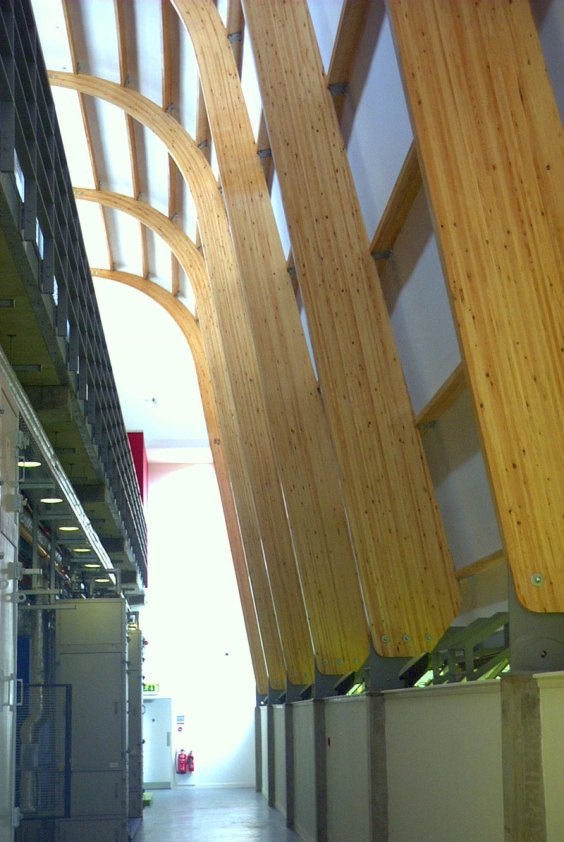
Inside the Granton Centre for Art © National Galleries of Scotland
Duxbury shows me around the NGS stores, pointing out the areas designated to sculpture, 3D work and crates of works on paper. In the picture stores, we pull out rack after rack, enjoying the odd juxtapositions that arise from storing 17th-, 18th- and 20th-century portraits next to each other in a bid to save space. It makes me question, among other things, our dedication to chronological curation and museum-style hangs over a salon approach – this sense of discovery and strange overlapping is exciting and just plain fun.
It’s encouraging to hear Duxbury echo my sentiments. Collection items regularly go out on loan from the National Galleries of Scotland, and curators seek out replacements from the stores to fill the gaps. ‘People often want to loan the famous pictures,’ says Duxbury, ‘so the Magrittes, for instance, are always being sent off. Having the stores means that a curator can come down here and choose something different, like Edwin Lucas, a Scottish surrealist…which gives a whole different picture of the surrealist movement.’
So which artworks have ended up in the Granton building stores – and more importantly, why? Here are just a few of the most surprising examples.
An embarrassing history: Madonna of the Yarnwinder (c. 1520–30), after Leonardo da Vinci
Leonardo da Vinci’s Madonna of the Yarnwinder (1499–1507) has been on long-term loan to the SNG from the Duke of Buccleuch since 2009, after it was stolen from the family home in 2003 and subsequently recovered in 2007. Unbeknownst to many, however, is that the SNG owns another Madonna of the Yarnwinder, acquired as a Leonardo in 1964, but which was later revealed to be a copy by Spanish painter Fernando Yáñez de la Almedina. Lingering embarrassment over the attribution means that it has spent most of its life in storage, but the two pictures are currently hanging together for the first time in a da Vinci exhibition at the Edo Tokyo Museum in Japan.
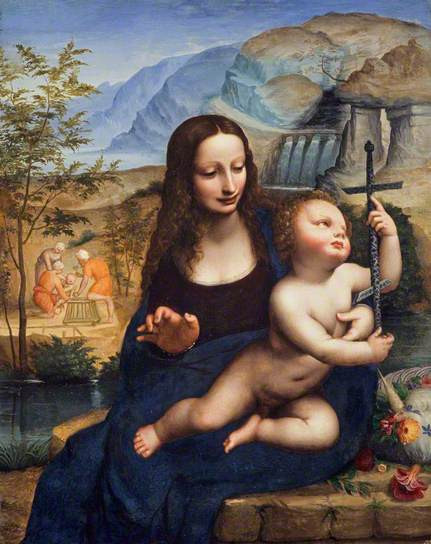
Madonna of the Yarnwinder (c. 1520–30), after Leonardo da Vinci © National Galleries of Scotland; Supplied by The Public Catalogue Foundation
Value judgments: Bathers in a Bright Light (1975), Norman Adams
Duxbury almost winces when he pulls out a rack bearing a large, rather flat-looking abstract work. Of Norman Adams’ Bathers in a Bright Light (1975), purchased by the SNGMA in 1979, he mulls, ‘Adams was fairly irrelevant to most art movements. People like Roger Hilton and Terry Frost, his contemporaries, were doing abstract paintings of much better quality.’ Here, then, is an example of a picture denied a space on the gallery walls because it doesn’t stand up to current views on canonical quality control. One can’t help but wonder whether hiding pictures away which aren’t quite ‘museum quality’ does more damage – both to artistic reputations as well as to public education – than good. Click here to view the image.
Almost but not quite: A Gallant of the Terror (1880), James Guthrie
According to Duxbury, during the last rehang of a room of Glasgow Boys paintings, this picture almost made it out. It had been through conservation and was ready to go on the wall, but it was ultimately sent back to stores because there simply wasn’t enough space available after all.
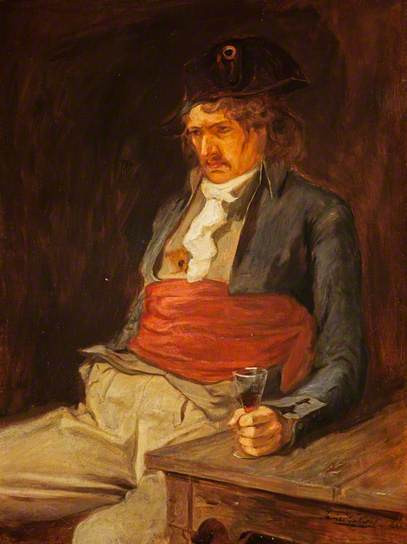
A Gallant of the Terror (1880), James Guthrie © National Galleries of Scotland; Supplied by The Public Catalogue Foundation
Strange rediscoveries… Reproduction of Antonio Canova’s Monument to the Royal Stuarts
This strange, wooden reproduction of Canova’s 1819 memorial to the Stuarts in St Peter’s Basilica had been sitting in the stores, presumably uncatalogued, since 2002 – long enough that no one could remember where it came from or why (though a little digging revealed that the copy was commissioned for a 2001 exhibition, ‘The King Over the Water’). Some months ago a curator was visiting the stores, saw it, and thought it would make a perfect addition to a recent display exhibition at the National Portrait Gallery marking the 400th anniversary of the Jacobite uprising. It is now back on display for the duration of the exhibition (until 27 March).
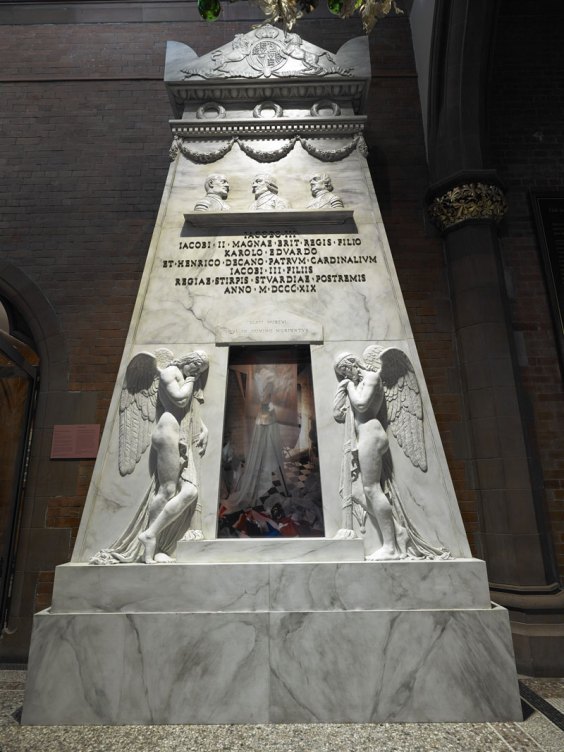
Replica of the monument to the Stuarts by Antonio Canova in St Peter’s Basilica in Rome. Shown here as part of the display ‘Calum Colvin: Jacobites By Name’, at the Scottish National Portrait Gallery until 27 March 2016. © National Galleries of Scotland
Display problems: Collection of Tassie gems
Some of the most impressive objects I saw on my visit are sadly unlikely to be seen by the public any time soon. James Tassie (1735–1799) was a prolific collector of impressions and reproductions of classical gems. Only three complete sets of Tassie gems are known to exist: one in the V&A, one in the Hermitage and this one in Edinburgh. Hundreds of wax impressions and their glass paste gem counterparts are housed in a magnificent wooden case, but only a few drawers of the case are on display in the museum at any one time. This is exactly the kind of important and beautiful collection that really should be shown in public, but is also of the sort that provides the most considerable challenges in terms of display, preservation and protection.
Longest in store, reasons unknown: Mrs Leiper (1872), William McTaggart
When I asked which item had been in store the longest, Duxbury said he didn’t know off the top of his head but would make enquiries. A few days later, I received an email: the painting in store the longest, continuously in the same location (i.e. since July 2002, when the stores opened) is this 1872 portrait of Mrs Leiper by William McTaggart, bequeathed to the gallery in 1916 by Scottish architect (and presumably the sitter’s husband) William Leiper. One wonders why it’s been so unpopular with curators – perhaps it’s because McTaggart is thought of as a Scottish landscape painter and portraits don’t suit that narrative. Another example of the power of canonical interpretations when it comes to deciding what’s seen and unseen.

Mrs Leiper (1872), William McTaggart © National Galleries of Scotland; Supplied by The Public Catalogue Foundation
Unlimited access from just $16 every 3 months
Subscribe to get unlimited and exclusive access to the top art stories, interviews and exhibition reviews.

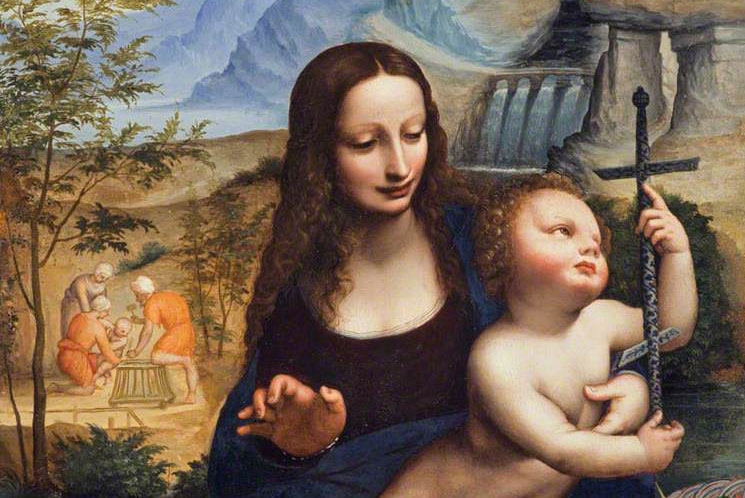
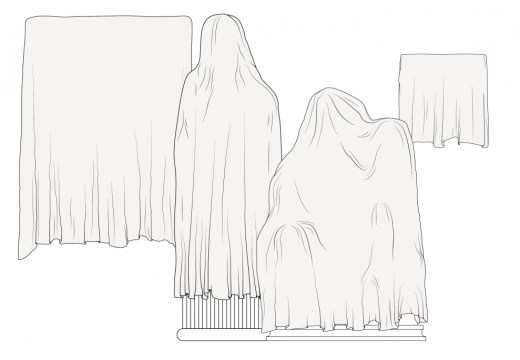
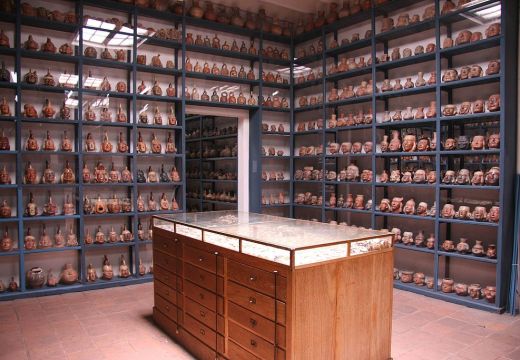









![Masterpiece [Re]discovery 2022. Photo: Ben Fisher Photography, courtesy of Masterpiece London](http://www.apollo-magazine.com/wp-content/uploads/2022/07/MPL2022_4263.jpg)
Has the Fitzwilliam lost the hang of things?